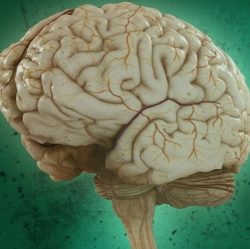
A new computer chip developed by IBM, and we are closer to making computers work like the brain. The neuromorphic chip is made from a phase-change material commonly found in rewritable optical discs. Because of this, components behave similar to biological neurons:
They can scale down to nanometer size and perform complicated computations rapidly with little energy. What makes them especially amazing is how they “fire.” They integrate previous input history to determine whether or not to activate. They also show a characteristic trait of biological neurons called stochasticity, that is, when given a similar input, the chip always produces a slightly different, unpredictable result. Stochasticity is the basis of population coding, a type of highly efficient computation that relies on groups of neurons working together. This neuronal quirk was previously tough to mimic using artificial materials.
The chip adds to previous brain-like computing memristors, says Dr. C. David Wright at the University of Exeter to Singularity Hub. It’s a huge leap forward for “building dense, large-scale, interconnected synapses to provide fast neuromorphic processors,” he says.
